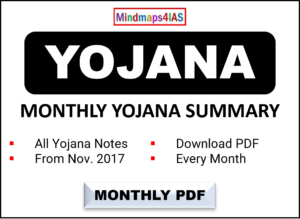Why in the News?
-
NASA astronaut Sunita Williams and Butch Wilmore returned to Earth after a prolonged stay on the International Space Station (ISS) due to propulsion issues with the Boeing Starliner spacecraft.
-
Their return journey was aboard SpaceX’s Dragon spacecraft.
Key Takeaways
-
Starliner Spacecraft:
-
Boeing-built spacecraft designed to transport people to and from low-Earth orbit (LEO).
-
Developed in collaboration with NASA’s Commercial Crew Program.
-
Can accommodate up to seven passengers or a mix of crew and cargo for LEO missions.
-
Reusable up to 10 times with a six-month turnaround time.
-
Return journey to Earth was initially scheduled for June 26 but was postponed due to issues detected in some key mechanisms required for a safe flight.
-
-
SpaceX’s Crew Dragon:
-
Partially reusable variant of SpaceX’s Dragon 2 spacecraft.
-
Crew Dragon primarily transports astronauts to the ISS.
-
Cargo Dragon supplies cargo to the space station.
-
Crew Dragon’s first mission to the ISS took place in 2020, transporting four American and Japanese astronauts.
-
Consists of a reusable space capsule and an expandable trunk module.
-
Launched into space atop a Falcon 9 rocket and docks automatically to the ISS.
-
-
SpaceX’s Falcon 9:
-
A partially reusable rocket designed and manufactured by SpaceX.
-
Can transport crew and payloads to low Earth orbit (an altitude of 2000 km or less) and beyond.
-
Two-stage rocket:
-
First stage: Nine Merlin engines, aluminium-lithium alloy tanks containing liquid oxygen and rocket-grade kerosene propellant. Reusable and capable of vertical landing.
-
Second stage: Single Merlin engine.
-
-
-
Space Anaemia:
-
Condition observed in astronauts during and after extended space missions.
-
Primarily due to the body’s adaptation to the unique environment of space.
-
Microgravity leads to significant fluid shifts, impacting blood volume and red blood cell production.
-
Reduction in overall blood volume can result in lower red blood cell counts and decreased haemoglobin levels.
-
-
Impact of Space Travel on Astronauts:
-
Physiological changes due to prolonged exposure to microgravity, radiation, and isolation.
-
“Baby Feet”: Loss of calluses on the feet due to the absence of air and gravity, leading to thinner skin.
-
Bone Density Loss: Irreparable bone density loss due to the absence of gravity.
-
Weight-bearing bones become about one percent less dense for every month spent in space.
-
NASA states that for every month spent in space, the weight bearing bones of astronauts become about one percent less dense, if proper precautions are not taken.
-
-
Cosmic Radiation and DNA Damage: Increased exposure to cosmic rays and solar radiation, which can penetrate the body and damage cellular DNA. Microgravity compromises the body’s ability to repair damaged DNA.
-
India’s Gaganyaan Mission
-
Announcement: Announced in 2018.
-
Objective: Demonstrate human spaceflight capability by sending a crew of 3 members to a 400 km orbit for a 3-day mission and safely returning them to Earth by landing in the Indian sea waters.
-
Exclusive Club: Only the United States, Russia, and China have executed human spaceflight missions so far.
-
Challenges: Sending humans into space and bringing them back safely is more expensive and challenging than Mars and Moon missions.
-
ISRO Goals:
-
Short-term goal: Demonstrate human spaceflight to Low Earth Orbit.
-
Long-term goal: Lay the foundation for a ‘sustained Indian human space exploration programme’.
-
















